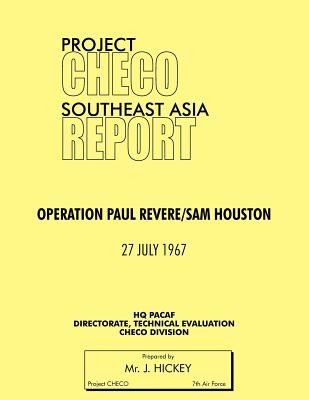
- We will send in 10–14 business days.
- Author: Lawrence J Hickey
- Publisher: MILITARY BOOKSHOP
- ISBN-10: 1780398107
- ISBN-13: 9781780398105
- Format: 21.6 x 27.9 x 0.8 cm, softcover
- Language: English
- SAVE -10% with code: EXTRA
Reviews
Description
High quality reprint of this recently declassified 1967 study. This study covers a year of tough fighting in the highly strategic central highlands area of Vietnam, an area which the communists have always considered essential to their effort to take over South Vietnam. Prior to the arrival of U.S. forces in 1965, there was little activity in western Pleiku Province, but starting with the move of the 1st Air Cavalry Division to the defense of the besieged fort of Plei Me in October 1965, fighting has been continuous. The western Pleiku area, however, on the western end of strategic Highway 19, which cuts across the country to the coastal port of Qui Nhon, is the logical entry point for any planned enemy drive to cut South Vietnam in half. In this objective, the enemy has not succeeded. What emerges clearly from this account of fighting by the 1st Air Cavalry, 25th, and 4th Infantry Divisions in the central highlands is the absolute essentiality of air support to the survival of friendly forces. Perhaps never in history has a large ground force in war been so dependent upon air support, close air support, and tactical airlift, as well as other air support functions such as interdiction, landing zone preparation, reconnaissance, night flare drops, defoliation, psychological warfare, and search and rescue. This study shows in detail the means by which air was employed in highlands fighting and how it directly affected and influenced ground action. The U.S. units are generally flown to the battle areas and are cut off by land from their normal support bases. They cannot continue to function effectively without the air umbrella provided by the vast armada of U.S. aircraft located in Vietnam. Air support, as can be seen from this study, is infinitely more than a new dimension of artillery. It is the difference between success or failure and no one will attest to this more strongly than the U.S. Army ground commanders on the receiving end, many of whom are quoted in the study.
EXTRA 10 % discount with code: EXTRA
The promotion ends in 20d.18:08:21
The discount code is valid when purchasing from 10 €. Discounts do not stack.
- Author: Lawrence J Hickey
- Publisher: MILITARY BOOKSHOP
- ISBN-10: 1780398107
- ISBN-13: 9781780398105
- Format: 21.6 x 27.9 x 0.8 cm, softcover
- Language: English English
High quality reprint of this recently declassified 1967 study. This study covers a year of tough fighting in the highly strategic central highlands area of Vietnam, an area which the communists have always considered essential to their effort to take over South Vietnam. Prior to the arrival of U.S. forces in 1965, there was little activity in western Pleiku Province, but starting with the move of the 1st Air Cavalry Division to the defense of the besieged fort of Plei Me in October 1965, fighting has been continuous. The western Pleiku area, however, on the western end of strategic Highway 19, which cuts across the country to the coastal port of Qui Nhon, is the logical entry point for any planned enemy drive to cut South Vietnam in half. In this objective, the enemy has not succeeded. What emerges clearly from this account of fighting by the 1st Air Cavalry, 25th, and 4th Infantry Divisions in the central highlands is the absolute essentiality of air support to the survival of friendly forces. Perhaps never in history has a large ground force in war been so dependent upon air support, close air support, and tactical airlift, as well as other air support functions such as interdiction, landing zone preparation, reconnaissance, night flare drops, defoliation, psychological warfare, and search and rescue. This study shows in detail the means by which air was employed in highlands fighting and how it directly affected and influenced ground action. The U.S. units are generally flown to the battle areas and are cut off by land from their normal support bases. They cannot continue to function effectively without the air umbrella provided by the vast armada of U.S. aircraft located in Vietnam. Air support, as can be seen from this study, is infinitely more than a new dimension of artillery. It is the difference between success or failure and no one will attest to this more strongly than the U.S. Army ground commanders on the receiving end, many of whom are quoted in the study.


Reviews